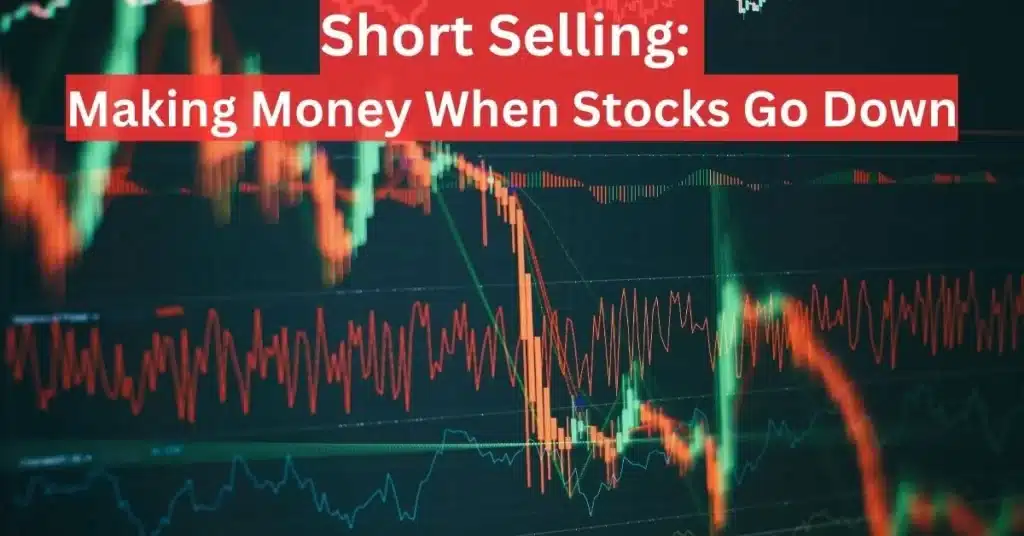Understanding Primary Market vs Secondary Market: Your Investment Journey Starts Here
When I first started investing, the difference between primary market vs secondary market felt like financial jargon that only experts understood. But here’s the truth: grasping this fundamental concept is your gateway to making informed investment decisions and maximizing your portfolio returns.
The financial markets operate through two distinct yet interconnected systems. The primary market vs secondary market distinction forms the backbone of how securities are created, priced, and traded globally. In 2024 alone, India’s National Stock Exchange (NSE) facilitated 268 IPOs in the primary market, raising approximately ₹1.67 lakh crore – setting a global record for equity capital raised.
Why This Matters to You
- Make smarter investment timing decisions
- Understand IPO opportunities vs stock trading
- Navigate market volatility with confidence
- Build a diversified investment strategy
Primary Market vs Secondary Market: Visual Overview


Primary Market vs Secondary Market: Key Differences
| Aspect | Primary Market | Secondary Market |
|---|---|---|
| Purpose | Raise capital for companies | Enable trading between investors |
| Securities Type | New securities (IPO, FPO) | Existing securities |
| Price Determination | Fixed by company & underwriters | Market forces (supply & demand) |
| Money Flow | To issuing company | Between investors |
| Trading Frequency | One-time event | Continuous trading |
| Examples | Hyundai IPO, Paytm IPO | NSE, BSE, NASDAQ |
| Risk Level | Higher (new company) | Varies (established track record) |
Primary Market: Where Securities Are Born
The primary market is where the magic begins. Think of it as the “factory” where new securities are manufactured and sold for the very first time. In the primary market vs secondary market comparison, the primary market serves as the birthplace of investment opportunities.
How the Primary Market Works
Company Decision
Private company decides to go public to raise capital for expansion
Underwriter Selection
Investment banks help price and market the securities
Regulatory Approval
SEBI approval and prospectus filing for Indian markets
Public Offering
Securities sold directly to institutional and retail investors
Types of Primary Market Offerings
Initial Public Offering (IPO)
First-time public offering of company shares
Example: Zomato IPO (2021) raised ₹9,375 crore
Follow-on Public Offering (FPO)
Additional shares by already public companies
Example: Additional equity dilution
Rights Issue
Existing shareholders get preferential buying rights
Example: Reliance rights issue (2020)
Primary Market Investment Tips
- Research thoroughly: Read the prospectus and understand company fundamentals
- Assess valuation: Compare with similar companies in secondary markets
- Consider lock-in periods: Some IPO shares have trading restrictions
- Diversify applications: Don’t put all funds in one IPO
Secondary Market: The Trading Playground
Once securities graduate from the primary market, they enter the vibrant world of secondary trading. In our primary market vs secondary market analysis, the secondary market is where the real action happens – where prices fluctuate based on market sentiment, company performance, and economic factors.
Secondary Market Characteristics
Investor-to-Investor Trading
Securities change hands between buyers and sellers without company involvement
Price Discovery
Real-time pricing based on supply, demand, and market conditions
Continuous Trading
Markets operate during trading hours with instant execution
High Liquidity
Easy entry and exit with minimal price impact for most securities
Major Secondary Market Types
Auction Markets
Centralized trading where all participants converge, like the New York Stock Exchange (NYSE). Buyers and sellers openly declare bid and ask prices.
Best for: Large-cap stocks, transparent price discovery
Dealer Markets
Electronic networks where market makers provide liquidity, like NASDAQ. Dealers maintain inventory and earn from bid-ask spreads.
Best for: Technology stocks, high-frequency trading
Secondary Market Success Strategies
- Timing: Use technical analysis for entry/exit points
- Diversification: Spread risk across sectors and market caps
- Research: Follow company earnings, news, and analyst reports
- Risk Management: Set stop-losses and position sizing
- Long-term View: Don’t panic during short-term volatility
- Costs: Consider brokerage, taxes, and transaction fees
2024 Market Performance: Record-Breaking Year
India’s IPO Market Sets Global Records
268
Total IPOs on NSE
₹1.67L Cr
Capital Raised
$19.5B
USD Equivalent
Primary Market vs Secondary Market: 2024 Performance Breakdown
Primary Market Highlights
- 90 Main Board IPOs raised ₹1.59 lakh crore
- 178 SME IPOs raised ₹7,349 crore
- Hyundai Motor IPO: ₹27,500 crore (largest in India)
- Average Listing Gain: 25% in 2024
Secondary Market Performance
- NIFTY 50: Steady growth throughout 2024
- Global Leadership: NSE leads Asia in IPO count
- High Liquidity: Continuous trading volume growth
- Retail Participation: Increased investor base

Frequently Asked Questions: Primary Market vs Secondary Market
What is the main difference between primary market vs secondary market?
The primary market is where companies issue new securities for the first time (like IPOs), while the secondary market is where investors trade existing securities among themselves. Think of primary as “buying from the company” and secondary as “buying from other investors.”
Which market is better for beginners – primary or secondary?
For beginners, the secondary market is often more suitable because it offers established companies with track records, instant liquidity, and transparent pricing. Primary market investments like IPOs carry higher risks due to limited historical data but can offer higher returns.
How do prices work differently in primary vs secondary markets?
In the primary market, companies and underwriters set fixed prices based on valuation models. In the secondary market, prices fluctuate continuously based on supply, demand, and market sentiment. Secondary market pricing is more dynamic and reflects real-time investor perceptions.
Can I sell primary market securities immediately?
Most primary market securities can be sold in the secondary market once they get listed on exchanges (usually within a few days). However, some may have lock-in periods or holding requirements, especially for promoter shares or employee stock options.
What are the costs involved in primary vs secondary market investing?
Primary market: Usually no brokerage fees, but application and processing charges may apply. Secondary market: Involves brokerage fees (0.01%-0.5%), STT, GST, and other transaction costs. However, secondary markets offer more flexibility and liquidity.
How has the primary market vs secondary market performed in 2024?
2024 was exceptional for India’s primary market with 268 IPOs raising ₹1.67 lakh crore, setting global records. The secondary market also performed well with steady growth in NIFTY and increased retail participation. The primary market showed an average listing gain of 25%.
Should I invest in both primary and secondary markets?
Yes, a balanced approach often works best. Use secondary markets for core portfolio holdings with established companies, and selectively participate in promising IPOs for growth potential. Diversifying across both markets can optimize risk-adjusted returns based on your investment goals and risk tolerance.
Building Your Investment Strategy: Primary vs Secondary Market Approach
Primary Market Strategy
Best For:
- Long-term wealth creation
- High risk tolerance investors
- Seeking listing gains potential
- Supporting new businesses
Key Tactics:
- Research thoroughly: Read prospectus, financials
- Diversify applications: Apply to multiple quality IPOs
- Assess fundamentals: Growth potential, management quality
- Consider market conditions: Bull vs bear market timing
Secondary Market Strategy
Best For:
- Immediate liquidity needs
- Portfolio diversification
- Active trading opportunities
- Established company exposure
Key Tactics:
- Dollar cost averaging: Regular systematic investments
- Sector rotation: Move between sectors based on cycles
- Technical analysis: Use charts for timing decisions
- Value investing: Find undervalued quality stocks
Balanced Portfolio Allocation Suggestion
70-80%
Secondary Market
(Established stocks, mutual funds)
10-20%
Primary Market
(Selective IPOs, new issues)
5-10%
Alternative Investments
(REITs, bonds, commodities)
Your Investment Journey: Next Steps
Understanding primary market vs secondary market is your foundation for building wealth in the stock market. With India’s record-breaking 2024 performance – 268 IPOs raising ₹1.67 lakh crore – both markets offer tremendous opportunities for informed investors.
Key Takeaways
- Primary markets offer growth potential through IPOs and new issues
- Secondary markets provide liquidity and established investment options
- Diversification across both markets optimizes risk-adjusted returns
- Research is crucial regardless of market choice
- Risk management should guide all investment decisions
- Long-term perspective beats timing the market
Disclaimer: This content is for educational purposes only and does not constitute financial advice. Always consult with qualified financial advisors and conduct your own research (DYOR) before making investment decisions. Past performance does not guarantee future results.
References & Sources
Legal Information
Content for educational purposes only. Not financial advice. Markets subject to risk.


